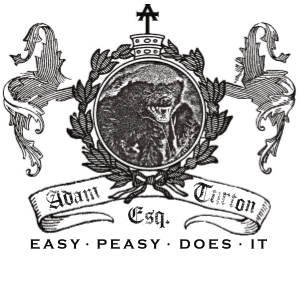skip to main |
skip to sidebar
BBC NEWS | Technology | Wall 'could stop desert spread'The growing environmental threat of desertification could be stopped in Africa by solidifying dunes using bacteria.
Technology Review: Cheaper Geothermal
Fluid extracts more heat out of low-temperature wells.
1 in 6 public health workers unlikely to respond in pandemic flu emergency
Approximately 1 in 6 public health workers said they would not report to work during a pandemic flu emergency regardless of its severity, according to a survey led by researchers at the Johns Hopkins Bloomberg School of Public Health. The findings are a significant improvement over a 2005 study conducted ...
Japanese professor creates baseball-playing robots
(AP) -- Look out Ichiro Suzuki and Daisuke Matsuzaka. A pair of baseball-playing robots that can pitch and hit with incredible results have been developed in Japan.
Eat It to Save It - Idea of the Day Blog - NYTimes.com
<strong>Friday | Today's idea: Farm biodiversity is disappearing, so we should eat endangered crops and livestock to boost demand for them and thereby save them from extinction, an article says. [<a href="http://www.miller-mccune.com//science_environment/eat-em-to-save-em-1338">Miller-McCune</a>]</strong>
Technology Review: A Biofuel Process to Replace All Fossil Fuels
A startup unveils a high-yield process for making fuel from carbon dioxide and sunlight.
U.S. Home Vacancies Hit 18.7 Million on Bank Seizures (Update2) - Bloomberg.com
More than 18.7 million [bn:WBTKR=HOWNVAC:IND] homes [] stood
empty in the U.S. during the second quarter as the steepest
recession in 50 years sapped demand for real estate and banks
seized properties from delinquent borrowers.
At 30 Rockefeller Plaza, Stripping Away the Darkness From Murals - NYTimes.com
Conservators are removing decades of yellowed varnish from the famed Art Deco murals in the lobby of 30 Rockefeller Plaza.
Well - Alcohol Has Major Role in Latest Potter Movie - NYTimes.com
Will tipsy wizards send a message to teenagers about how to cope?
A Quest for Batteries to Alter the Energy Equation - NYTimes.com
The competition is on to build smaller, lighter, more powerful batteries that could help transform the American energy economy.
Late-blight fungus ruining crops in 13 states
A fungus that caused the infamous 1840s Irish potato famine has hit this summer's commercial and homegrown tomato crop in 13 states, putting farmers and agricultural experts on edge.
Women are getting more beautiful - Times Online
FOR the female half of the population, it may bring a satisfied smile.
Forensics Myths Debunked - The Truth Behind Real CSI Evidence - Popular Mechanics
Forensic science was not developed by scientists. And as hundreds of criminal cases begin to unravel, many established practices are coming under fire. PM takes an in-depth look at the shaky science that is putting innocent people behind bars.
Cutthroat Capitalism: An Economic Analysis of the Somali Pirate Business Model
Get in-depth politics and legal news coverage including online privacy, Internet security, government regulations, censorship and free speech from Wired.com.
The Crow Paradox : NPR
Here's a surprise: Wild crows can recognize individual people. They can pick a person out of crowd, follow them, and remember them for years. But people — even people who love crows — can't recognize individual crows. Here, two experiments that tell the story.
Technology Review: Cheaper Solar Thermal Power
A simpler design could reduce the cost of solar power generated by concentrating sunlight on Stirling engines.
Brain Power - In Battle, Hunches Prove to Be Valuable - Series - NYTimes.com
U.S. soldiers are at the center of an effort to understand how it is that some people’s brains can sense danger before others’ do.
First genetically-engineered malaria vaccine to enter human trials
Walter and Eliza Hall Institute scientists have created a weakened strain of the malaria parasite that will be used as a live vaccine against the disease. The vaccine, developed in collaboration with researchers from the US, Japan and Canada, will be trialled in humans from early next year.
Nanodiamonds deliver insulin for wound healing
Using tiny nanodiamonds, researchers at Northwestern University have demonstrated an innovative method for delivering and releasing insulin at a specific location over a period of time. The nanodiamond-insulin clusters hold promise for wound-healing applications and could be integrated into gels, ointments, bandages or suture materials.
6 Reasons Why The U.S. Economy May Never Recover |

No comments:
Post a Comment